
Copa é uma abreviação do italiano Capocollo, que por sua vez provém do latim “caput collum” e significa pescoço, pois tradicionalmente é utilizada a carne do pescoço suíno para fazer esta iguaria da charcutaria. Também pode ser feito com o lombo suíno, que tem bem menos gordura que o pescoço.Não é difícil fazer copa em casa, mas é trabalhoso pois leva bastante tempo e é preciso entender os processos envolvidos para ter segurança do que está sendo feito. No início o ideal é seguir a receita à risca, mas com a experiência é possível alterar conforme suas preferências. Mantenha tudo sempre bem higienizado.
Nesta copa testei o uso do filme de colágeno, que é um invólucro versátil e prático, que pode ser aplicado em carnes de qualquer espessura. Além da copa também pode ser utilizado em outros produtos que passarão por processo de maturação longa.
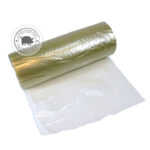
Ingredientes e processos da copa
Cura da copa
- Pescoço de porco – 826g;
- Sal – 2% – 17g;
- Sal de cura 2 (6% de nitrito, 3% de nitrato e 93,75% de sal) – 0.25% – 2g;
- Antioxidante (com eritorbato de sódio) – 0.25% – 2g (opcional);
- Açúcar – 5g – 0,5%.
O processo de cura é o início da produção, é o momento de salga e distribuição do sal de cura, que é o nitrito de sódio e o nitrato de sódio, para entender melhor sobre o sal de cura acesse Sal de cura. O antioxidante é opcional mas auxilia no processo de cura e ajuda a evitar a oxidação lipídica ou ranço da gordura.
Corte a peça de carne em segmentos de 10 cm para facilitar o manuseio e o armazenamento do produto pronto. Ao adquirir uma peça de sobrepaleta, possivelmente venha parte dos ossos da costela e um pouco do lombo. Retire todo o osso. O lombo pode ser usado pois é difícil identificar e separar perfeitamente da peça.
Aplique o sal, sal de cura e o antioxidante na carne massageando bem para espalhar e distribuir de forma homogênea. Acomode a peça em um recipiente com tampa ou em um saco plástico bem fechado e deixe na geladeira por 15 dias.
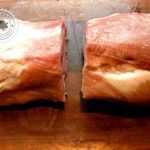
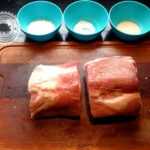

Condimentação da copa
- Açúcar mascavo – 10g;
- Pimenta do reino – 1g;
- Nóz moscada – 1g;
- Pimenta jamaica 2g;
- Páprica defumada – 2g;
- Cravo em pó – 0.5g;
- Cultura Starter (bactérias láticas) 0,1g – diluída em meio copo de água.
Após o período de cura inicial, retire a peça do refrigerador, enxague-a rapidamente e seque com um pano de prato ou papel toalha. Dilua a cultura stater na água e borrife ou espalhe com as mãos pela peça. Prepare uma mistura com os ingredientes secos da condimentação e aplique massageando bem na carne para uma distribuição completa.
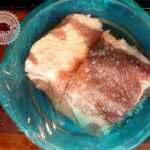
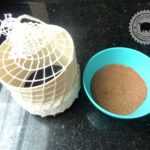
Invólucro e maturação
Filme de colágeno
Rede elástica 50mm ou 65mm – 15cm
Após condimentar a peça envolva-a no filme de colágeno e aplique a cultura starter novamente para garantir sua distribuição. Envolva em uma rede elástica para pressionar e facilitar o manuseio, amarre as duas pontas e utilize um gancho ou clips improvisado para pendurar a peça em um ambiente escuro, com temperatura amena, por volta de 14 graus e umidade elevada, entre 70% e 80%. No meu caso utilizei uma adega com controle de temperatura e um pote cheio de água no fundo para manter a umidade.
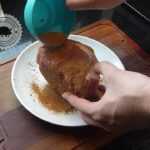
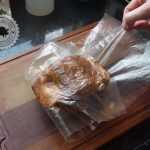

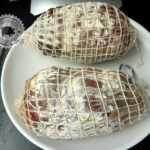
A copa estará pronta quando perder entre 30% e 40% do peso inicial. Caso queira um produto mais macio e suave, deixe perder apenas 30%, caso queira a copa mais firme e com sabor mais forte, deixe até perder 40%.
Na COPA que fiz a perda de peso foi a seguinte:
27/09 – 826g – 100% – peso inicial
08/10 – 655g – 79%
29/10 – 534g – 64% – perda de 36% do peso inicial
Resultado final
O produto ficou excelente, com sal no ponto certo e bem saborosa, mas não muito condimentada. Prefiro sentir o sabor da carne, então não aplico muita condimentação, prefiro um produto que remeta mais a um presunto cru do que o sabor das especiarias ou pimenta.
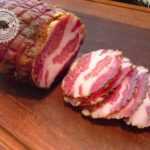
-
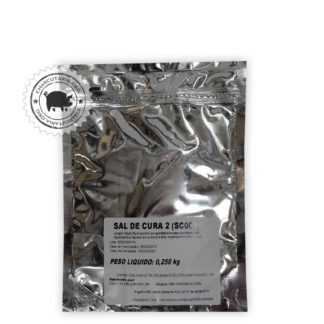 Sal de cura 2R$ 8,00
Sal de cura 2R$ 8,00 -
 Sal de cura 1R$ 8,00
Sal de cura 1R$ 8,00 -
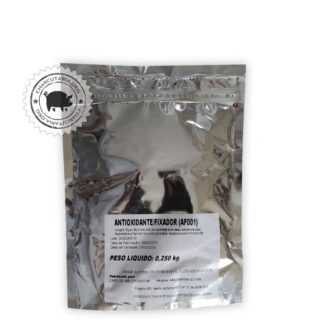 Antioxidante FixadorR$ 23,00
Antioxidante FixadorR$ 23,00 -
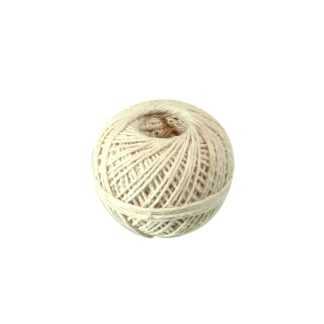 Barbante culinárioR$ 7,90
Barbante culinárioR$ 7,90 -
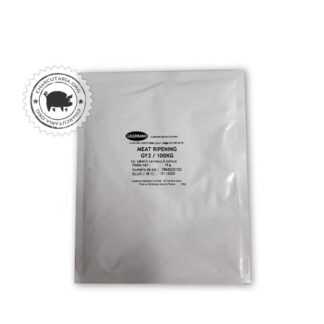 Cultura StarterO preço original era: R$ 69,90.R$ 59,90O preço atual é: R$ 59,90.
Cultura StarterO preço original era: R$ 69,90.R$ 59,90O preço atual é: R$ 59,90. -
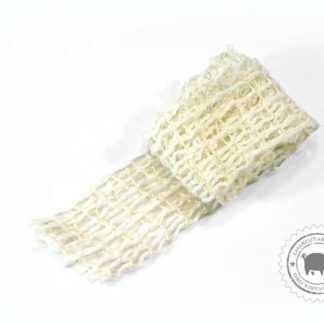 Rede elástica culinária 50mmR$ 15,00
Rede elástica culinária 50mmR$ 15,00 -
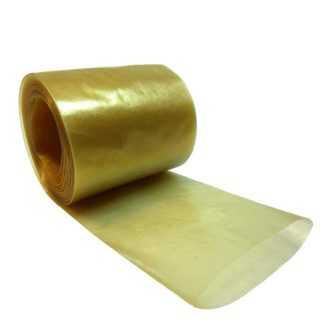 Tripa de colágeno 45mm rolo 5 metros salameR$ 25,00
Tripa de colágeno 45mm rolo 5 metros salameR$ 25,00 -
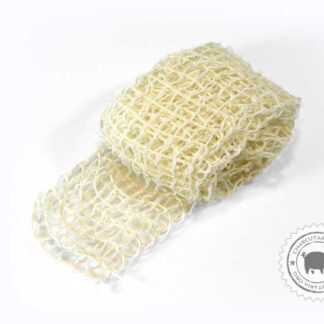 Rede elástica culinária 65mmR$ 18,00
Rede elástica culinária 65mmR$ 18,00 -
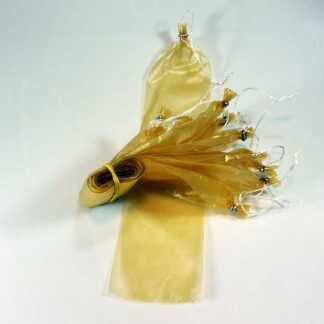 Tripa de colágeno salame 45mm 10 unidades amarradasR$ 22,00
Tripa de colágeno salame 45mm 10 unidades amarradasR$ 22,00 -
 Tripa de colágeno 80mm copa e salameR$ 29,90
Tripa de colágeno 80mm copa e salameR$ 29,90 -
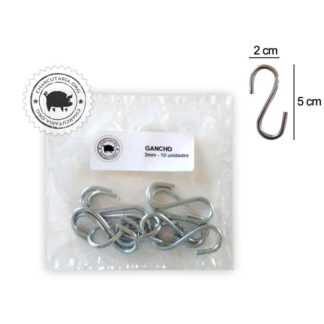 Gancho GalvanizadoR$ 12,00
Gancho GalvanizadoR$ 12,00 -
 Tripa de colágeno salame 50mm 10 unidades amarradasR$ 24,00
Tripa de colágeno salame 50mm 10 unidades amarradasR$ 24,00


Boa tarde.
Uma dúvida. Você coloca a ventilação (cooler de pc) dentro da adega de vinhos ou caso de utilização de adega não precisa?
A adega do vídeo já tem com uma ventilação integrada para circular o ar frio, então não precisou de cooler extra.
Usei Cultura starter sim e também o Mold 600.
Retire essas copas da temperatura mais alta da fermentação, lave bem esfregando água com um pouco de sal, depois aplique novamente a cultura mold e leve para a câmara refrigerada. A fermentação vai ocorrer também na câmara, só que de forma mais lenta.
Posso manter a pelicula e rede?
Peguei para larvar e vi que criou ar debaixo da pelicula.
Não sei se poderia ser o problema, mas eu fiz varios furos na pelicula para retirar todo ar.
Sabe o que pode ter ocorrido?
Queria saber para não ocorrer com salames quando eu for fazer.
Pode ter ocorrido alguma contaminação e o ar foi criado pela fermentação de bactérias indesejadas. Neste caso o ideal é retirar a película e a rede, lavar e refazer o embrulho. Recomendo que não fire o colágeno. Tente envolver apertando para remover o ar e não faça furos. A tripa já é projetada para perder peso corretamente, não há necessidade de furar, só se visualizar bolhas de ar.
Muito Obrigado!
Boa tarde, Me surgiu algumas duvidas em respeito a isso.
No produto final como eu poderia saber se está presente bacterias indesejadas? E elas podem me fazer mal ao consumir?
E exite perigo essa peça contaminar as outras boas na câmara?
E muito obrigado pelo apoio.
Marcio, boa tarde. Só com análise laboratorial é possível saber quais bactérias estão presentes. São aplicadas barreiras de proteção para minimizar a possibilidade de contaminação, como a acidificação pela adição de um acidulante(vinho, ácido cítrico e etc) ou proveniente da fermentação, adição de sal, temperatura baixa na maturação e perda de umidade, além dos cuidados na manipulação durante todo o processo e a aquisição de uma carne certificada. Sempre há a possibilidade de um produto contaminar o outro. Aplicando todas as barreiras de proteção e seguindo as boas práticas a chance de contaminação é muito baixa. Caso esteja em dúvida, descarte a peça, tente identificar a origem da contaminação para que na próxima produção não ocorra o mesmo problema. A carne é um produto fresco, natural, que tem microbiologia natural presente.
Algumas eu coloquei na câmara a 13C e não estão com esse cheiro, parece até cheiro de chulé .
Olá, fiz essa receita exatamente como no video.
Hoje faz um dia que está na fermentação, o problema é que esta um cheiro muito ruim de vinagre, bem azedo. o que pode ser?
Oi Marcio. Usou a cultura starter?
Usei sim.
Boa tarde, desculpa tantas perguntas.
Mas fiz essa copa e a 11 dias está na maturação 14ºc umidade estava as +-70%. Ela perdeu 30% de peso mas esta com a capa pouco dura e o miolo muito mole, o que pode ter acontecido?
Tem como consertar?
obs.: Agora coloquei um umidificador onde a umidade fica entre 70 e 80%.
Oi Marcio, acho que está tudo correto, no início a perda de peso é mais rápida, depois reduz. Mantenha com a umidade alta até a copa perder, pelo menos, 45% do peso. Depois verifique se ainda aparenta estar mole no centro.
Eduardo gostaria de saber sobre a condimentação. Vejo algumas receitas que alguns colocam os condimentos na primeira etapa durante a cura, alguns colocam durante a maturação e ainda alguns colocam antes e depois. Quais as diferenças e qual o melhor jeito de se fazer?
Oi Andriel. No meu ponto de vista o ideal é colocar na primeira etapa durante a cura e depois, opcionalmente, colocar na segunda etapa durante a maturação. A condimentação na segunda etapa é opcional para acrescentar uma camada extra de condimentação externa, que reforça o sabor e cria uma aparência adicional. Mas há diversas receitas e tradições de produção, não há uma mais correta do que a outra, apenas a opção mais adequada ao produto que deseja fazer.
Eduardo, tive muita dificuldade para embrulhar as copas… fiz todo o processo e já estão na adega há umas duas semanas. Porém comecei a achar q estão com cheiro forte e vendo os comentários dos demais, vi que tem um mofo que pode não ser bom. Estou observando agora que ele se formou inclusive por baixo do colageno. Abri para ver, uma está com cheiro acho que normal mas com mofo branco, a outra tem um pedaço que está com um cheiro bem esquisito… posso lavar com a solução de agua vinagre e sal e embalar novamente ou devo descartar?
Oi Luciana, pode lavar bem e retornar para a adega, se possível reduza um pouco a temperatura. Continue acompanhando. Acredito que vá dar certo. Se puder poste fotos para ficar mais fácil analisar. O mofo positivo é sempre branco e liso/fino, não tem filamentos ou colorações variadas. Usou a tripa tubular? O filme/folha de colágeno geralmente é bem mais fácil pois independe da espessura da carne.
boa tarde Eduardo,
Depois dos quinze dias na geladeira, posso fazer o resto do processo da copa em temperatura ambiente com bastante ventilação?
Boa noite Eduardo,
Posso utilizar a fumaça líquida na copa? Se sim, em que etapa devo aplicar?
Oi Lucas. Logo no início, na etapa de cura e condimentação inicial que fica na geladeira. Aplique a fumaça juntamente com os demais condimentos e o sal de cura.
Obrigado. Vou fazer esse teste.
Bom dia Eduardo! Perguntar não ofende!1) Etapa de cura: após fazer o procedimento de cura, posso colocar a carne embalada à vácuo na geladeira por 15 dias?; 2) Etapa de maturação: após o procedimento de maturação posso passar a cultura starter e embalar a carne à vácuo para que se proceda a desidratação na geladeira? Há alguma vantagem/desvantagem em embalar à vácuo? No caso de usar carne bovina, posso usar as duas culturas da mesma forma como se fosse carne suína? Qual o papel/efeito do vinho na fase de procedimento de maturação? Obrigado!
Oi Sebastião.
No vácuo a carne não irá desidratar e a cultura é aeróbica, precisa de oxigênio para proliferar. Então as etapas de fermentação, maturação e desidratação devem ser feitas fora do vácuo.
Sobre a carne bovina, pode aplicar as duas culturas como é feito usando a carne suína.
O vinho tem ação de sabor e de proteção por acidificação.
Boa tarde Eduardo tudo bem.
Estou fazendo a copa, de acordo com o video acima.
Deixei 15 dias na geladeira, depois coloquei na folha de colageno com os temperos e apliquei a cultura starter antes e depois de colocar no colageno. Depois foi para o processo de fermentacao na adega, com 25 graus e um umidificador ligado direto(pois nao tinha um controlador de umidade). Ele começou a exalar um cheiro muito forte, mesmo assim mantive os 3 dias de fermentacao. Conforme sugerido por voce, tirei da adega e lavei a peca com a solucao de agua, vinagre e sal e passei para o processo de maturação, porem o cheiro ainda continua e hoje é o 3 dia de maturação. O que pode ter acontecido para ficar com esse cheiro ruim? Voce sugere que eu descarte as copas ou continue com o processo?
Mais uma pergunta sobre o processo, na descrição do processo acima nao foi feita a fermentação de 3 dias a uma temperatura de 24 graus. Qual a diferença se depois e colocar no colageno ir direto para maturação e nao fermentar?
Esses 3 dias em temperatura elevada servem para aumentar a taxa de proliferação da cultura starter, acidificando e protegendo o produto no início do processo. É a recomendação de uso das culturas, mas por vezes pulo esta etapa e vou direto para o ambiente refrigerado, principalmente quando o ambiente está muito quente. Ao colocar direto no ambiente refrigerado a taxa de proliferação da cultura será mais lenta, consequentemente demorará mais para a ação da cultura. A quantidade de açúcar na receita também é um controlador da fermentação, quanto mais açúcar mais alimento para a cultura proliferar e acidificar o produto.
Oi Douglas. O processe está correto, talvez alguma contaminação cruzada durante a manipulação, mas como ainda está no começo, recomendo que tire a copa do colágeno, lave bem a carne, esfregue com essa solução de água, sal e vinagre, embrulhe novamente e retorne para a maturação no ambiente refrigerado. Acompanhe por mais alguns dias e veja se o cheiro reduz ou some.
Eduardo boa tarde. Estou preparando para condimentar a copa ( já passei pelo processo de salga na geladeira por 15 dias ) . Chegaram os produtos que adquiri de você e tenho cultura starter e cultura fúngica. Tenho duvida de como usar uma e usar outra. Você pode me ajudar nisso? Aplico a cultura starter na peça e após embrulhada no colágeno uso a cultura fungica?
Antecipadamente grato pela sua atenção.
Ricardo
Oi Ricardo, é isso mesmo que citou. Aplique a cultura starter diretamente na carne, antes de embrulhar. A cultura fungica aplique após ter embrulhado, no exterior da copa e, se quiser, nas paredes do ambiente de maturação. Quanto mais o fungo estiver espalhado pela região, melhor.
Onde posso comprar film colageno em portugal ? Obrigado
Boa tarde.
Como faço queijo em casa quero aproveitar e fazer copa. Para tanto, com base nas informações do site, montei uma receita mas antes de fazer o pedido gostaria de tirar umas dúvidas. Esclareço que de inicio vou fazer uma copa de cada vez.
1. Para copa qual a Cultura Starter mais indicada?
2. Para copa qual a Cultura Fungica mais indicada?
3. O Antioxidante de Essência Natural de Alecrim substitui um dos dois itens acima ou tem função independente?
Agradeço desde já os esclarecimentos.
Luiz Carlos
Oi Luiz.
1) indico que use uma cultura starter bacteriana com ação multipla, ou seja, que faça a fermentação protetora básica mas que também agregue outros benefícios como sabor, aroma e cor.
2) pode usar a cultura fúngica penicillium nalgiovense, salamii ou a candidum(que também é usada em queijos).
3) o antioxidante de alecrim tem função distinta das culturas. O antioxidante vai inibir a oxidação lipídica(ranço).
Olá Eduardo, como vai? Muito agradecido por seu último suporte.
Retirei a Copa com 35% +/- e ficou muito saborosa. Estou com dúvida com uma mancha branca, aparentemente fungo, que formou em volta. Eu usei apenas a cultura start, então não deveria aparecer isso, certo? Outra coisa, depois que retirar o colágeno, o processo de cura para? Caso não, como faço para conservar com menor perda? Apenas guardando na geladeira resolve? Agradeço muito!
Abs
Oi Ernesto. Parece ótima a copa. Parabéns! O fungo branco e liso(fino tipo pó) é considerado seguro na charcutaria. Caso ainda tenha dúvidas sobre ser seguro consumir, lave bem a copa e corte uma pequena camada das regiões afetadas pelo fungo. Depois, para armazenar, aplique um pouco de azeite no exterior, envolva com duas voltas de filme tipo pvc e guarde na geladeira. Vai durar entre 60 e 90 dias.
Estimados, tudo bem?
Uma dúvida! Preparei dois pedaços de file mignon, coloquei sal grosso, sal de cura 2, embalei ambos separadamente em embalagem plástica , sem ar e os deixei na geladeira por 9 dias; retirei, lavei bem, misturei os temperos com um pouco de vinho e espalhei a pasta em ambos; borrifei a cultura start em ambos e embalei da seguinte forma: 1 embalado com tripa de colágeno, amarrei, borrifei novamente e pendurei na minha adega a 16/17º e 70% de umidade! O segundo, eu passei o tempero borrifei a cultura embrulhei no papel manteiga dando 6 voltas e coloquei na adega, também!
A peça que está bom papel manteiga, não abri, mas sei que está perdendo peso, por volta de 20 % desde sexta feira passada! A outra, em tripa de colágeno, não percebo desenvolvimento de fungos, é normal? Ela já perdeu mais de 25% de sexta para cá, estou errando em alguma coisa? Mesmo que não haja fungos, já chance de ficar bom? Agradeço por demais sua preciosa ajuda!!
Atenciosamente
Ernesto
Oi Ernesto. A quanto tempo estão penduradas perdendo peso? A cultura starter bacteriana tem ação direta na carne para promover cor, sabor, aroma e proteção, mas não tem ação na formação do fungo branco externo, que é promovido por outra cultura, que é a cultura mold/fúngica. Essas duas culturas são complementares e opcionais, não tendo uso obrigatório.
Quando não é aplicada a cultura mold/mofo é um ponto positivo não surgir mofo externo pois significa que o processo está correndo bem sem a contaminação por fungos desconhecidos. O fungo branco intencional(pela aplicação da cultura mold) é opcional e todo e qualquer outro fungo que surgir deve ser removido o quanto antes esfregando água com sal e vinagre. Portanto, pode prosseguir normalmente que está tudo correndo bem!
Qualquer dúvida adicional é só falar!
Eduardo, bom dia!
Estou fazendo o copa. Estou no vigésimo dia e já está com 83% do peso inicial.
O copa está sem apresentar fungos, porém está com odor bem forte e o exterior do colageno apresenta bem pegajoso. É normal isso? Devo lavar em água corrente para sair o visco e diminuir o odor?
Desde já agradeço.
Oi Juliano, pode sair cheiro por fermentação ou fungos. A fermentação da cultura starter ou outras bacterias do ambiente. Pode limpar sim, passe em água corrente, esfregue suavemente para remover a possível contaminação exterior e depois aplique(borrife ou esfregue) uma solução de água(200ml), sal(20g) e vinagre(1 colher de sopa) antes de pendurar novamente para ajudar a proteger. Abraços!
Boa noite! Estou vendo seus vídeos para fazer a copa, vou comprar os produtos aqui mas me surgiu uma dúvida ao ler os comentários. Devo borrifarca cultura Starter na segunda etapa, certo? Tão logo após embalar no colágeno e colocar na rede para o processo de maturação, devo borrifar a cultura fúngica penicillium? Esta, assegura e impede que outros tipos de fungos nocivos possam contaminar a copa? Devo então, utilizar as duas culturas?
Oi Walmor, o ideal é aplicar as duas culturas. A cultura starter aplique diretamente na carne antes de envolver no colágeno, borrifando ou espalhando com as mãos mesmo. A cultura fúngica aplique após envolver no colágeno e prender com a rede elástica. São culturas complementares, a primeira age diretamente na carne, protegendo e desenvolvendo sabores e aromas. A segunda age no exterior, criando um revestimento com fungo positivo que inibe outros fungos nocivos que são bem comuns durante a período em que a copa fica pendurada. O uso das culturas não é obrigatório, mas é recomendável. Espero ter ajudado a sanar suas dúvidas.
Eduardo, boa noite!
Possuo apenas a cultura Starter. Não me atentei que eram duas culturas quando fiz a compra.
Posso usar na carne e depois na embalagem a Starter eliminando a funfica?
Outra dúvida, estou com dez dias da primeira etapa, a carne está com os sais e soltando bastante líquido, é normal?
Pode usar apenas a cultura starter sim. Mas a cultura fúngica tem ação diferente da starter, então não terá o mesmo efeito. A cultura starter atua diretamente na carne, já a fúngica atua no exterior inibindo o surgimento de outros fungos no exterior do produto.
Eduardo seguem algumas fotos. Estou contente com suas informações pois os produtos ficam ótimos. Abraço
Álvaro, parabéns. As peças estão muito bonitas.
Eduardo boa noite. Uma duvida, Na informação da cura da copa, voce indica 10% de açucar ( 1 grama ) e depois como condimentação voce indica 1 grama (10% ) de açucar mascavo. Por favor voce pode esclarecer ? São duas vezes ou uma só ? Adiciono o açucar mascavo na CURA ou na condimentação ? Grato
PS: Ja fiz Muitas linguiças, Salames, copas, lombo e ficaram ótimos porem esta duvida me pegou e quero deixar o produto final para ganhar o OSCAR ….
Oi álvaro. Nesta receita o açúcar foi aplicado duas vezes, uma vez na primeira etapa da cura na geladeira, depois apliquei novamente no revestimento externo antes de ensacar e pendurar. Particularmente gosto da copa um pouco mais adocicada. Lembrando que caso use cultura starter o açúcar também pode deixar a copa mais acidificada pois propicia mais alimento às bactérias que produzem ácido lático. Mas essa segunda etapa é opcional, pode reduzir ou fazer sem o açúcar e acrescentar mais pimenta, por exemplo. Vai do seu gosto. Depois mande foto de como ficou. Um grande abraço!!
Obrigado Eduardo.
Boa tarde Eduardo. Desculpa incomoda-lo. É que ontem postei algumas duvidas e não consigo saber em que titulo eu fiz a postagem com as perguntas. Percebi que são vários posts em diferentes categorias. Grato por ajudar. Att Alvaro
Oi Álvaro. Veja a pergunta e a resposta aqui: https://charcutaria.org/receitas/salame-artesanal-feito-na-geladeira/
Ótimo. Obrigado.
Pode-se aplicar os condimentos na primeira etapa (da cura na geladeira) para a carne absorver mais os sabores?
Bom dia ,
Estou fazendo uma copa ,e segui todas as etapas corretamente , estou maturando na geladeira embrulhada no papel manteiga,porém já tem 30 dias e não perdeu os 30% esperados ,perdeu somente em torno de 15% de seu peso .O que pode estar errado e o que posso fazer para perder pelo menos os 30%?
Att,
LEONARDO SEVERO.
Oi Leonardo. Muito provavelmente é falta de ventilação. Se possível acrescente uma ventoinha que gere uma leve movimentação no ar. Essa movimentação de ar facilita a troca de umidade entre o produto e o ambiente.
Olá, bom dia. Estou fazendo a receita da copa e ela já está há 4 dias na geladeira, porém começou a soltar muita água e agora a carne está nesse líquido. Minha dúvida é se eu retiro a água que desprende. Muito obrigado!
Oi Breno, retire a água apenas no final da etapa na geladeira. Ao final escorra tudo, lave e seque bem a carne antes de embrulhar no colágeno para pendurar.
Olá Eduardo, parabéns pelo trabalho.
Estou fazendo a receita da copa e estou usando uma caixa térmica conforme foto abaixo, tenho algumas dúvidas:
1- Após os 3 dias @20 graus 80% de umidade, precisarei manter ambiente também ventilado @14 graus 80% de umidade, como na produção de salame?
2- tem que manter em ambiente escuro, todo o período? Como comecei a “fase 2” 2 dias atrás a umidade fica muito alta (99%) e para manter em 90% preciso deixar destampado a caixa térmica e assim fica claro.
3- Usei somente a cultura bacteriana, vai ficar branco?
Oi Marcio. Isso, tente manter entre 12ºC e 14ºC nessa segunda fase. Com ventilação bem leve apenas para o ar circular. O processo é igual ao do salame. A umidade no início sempre é muito alta pois é um ambiente pequeno com muita água ainda disponível na carne. Com o tempo a umidade vai reduzindo. Conforme a umidade cai pode ir fechando a tampa.
Somente a cultura bacteriana não cria o revestimento branco, pois o branco é proveniente da cultura fúngica penicillium. O que pode fazer é borrifar a casca de um queijo brie dissolvida em água. O fungo do brie é propício para carnes também. Mas pode não vingar pois a cepa pode já estar toda morta, mas vale a tentativa caso não queira adquirir uma cultura fúngica penicillium.
Poderia fazer sem a cultura fúngica ou tenho que colocar obrigatoriamente? O que afeta não usar?
Pode fazer sem. A cultura fúngica coloniza o exterior do produto inibindo(por competição) o surgimento de outros mofos que podem gerar toxinas. A cultura fungica intencional protege ao proliferar/colonizar uma variedade positiva no exterior do produto. Caso queira fazer sem, apenas fique de olho e sempre que surgir algum mofo elimine rapidamente esfregando um pano embebido em salmoura(200ml de água + 20g de sal). O inconveniente é esse trabalho de ficar olhando e limpando. Aplicando a cultura, mais ou menos em uma semana, o produto estará branquinho por fora e dificilmente algum outro fungo aparecerá. Se tiver interesse dê uma olhada na cultura fúngica(mold) penicillium. Abraços!
Olá Eduardo, muito obrigado por compartilhar seu conhecimento….
Passado 8 dias da fase 2 notei o aparecimento de alguns fungos, ou acho que é rsrs.
Então após o aparecimento, removi todos com a salmoura que você indicou, mas antes tirei algumas foto para você avaliar.
Tinham alguns brancos e outros esbranquiçados parecido e com consistência tipo de gordura.
Com relação ao peso reduziu 9% nesses 8 dias.
Mais uma vez obrigado e se puder verificar as fotos agradeço.
Oi Marcio. São fungos sim, remova o mais rápido possível sempre que aparecerem. Conforme forem perdendo peso a tendência do surgimento dos fungos vai reduzindo. A única forma de acabar com o surgimento desses fungos indesejados é aplicando a cultura mold penicillium. Ela coloniza o exterior e inibe a proliferação de outros fungos. A perda de peso está boa, depois vai desacelerar. Abraços!
Boa tarde, como faço para saber em quais receitas devo optar por aplicar a cultura starter antes do filme de colágeno (direto na carne) ou após o filme e a amarração? Pergunto isso pois na sua receita é aplicado na carne e já vi algumas que seria depois de embalado. Por fora aparenta ser melhor, mas como não sou profissional gostaria da sua opinião. Obrigado!
Fernando, há dois tipos de culturas, a cultura fúngica penicillium e a cultura starter bacteriana. A cultura starter bacteriana age diretamente na carne, então aplicar na carne sempre será a melhor opção. A cultura fúngica cria uma camada externa de fungo benéfico(camada branca externa), neste caso a aplicação externa no invólucro é mais recomendada.
Entendi Eduardo, muito obrigado pela explicação. No mesmo assunto, quando eu utilizar a cultura bacteriana numa copa, por exemplo, ao borrifar a cultura sobre a carne, como você fez no vídeo, e envolvê-la no filme de colágeno, ocorre a formação de fungo branco também? Caso sim, a camada criada de fungo irá aparecer por fora ou na carne?
A cultura bacteriana vai ter ação benéfica no sabor, aroma e coloração da copa. O revestimento externo branco será formado pela aplicação da cultura fungica penicillium no exterior da copa. Então para garantir a formação de um fungo positivo(branco e liso) no exterior do produto é preciso aplicar a cultura de fungo. São culturas com ações diferentes e o ideal é usar as duas em conjunto.
Neste caso, a cultura bacteriana seria a que comumente se substitui por borrifar Yakut? Isso trás bom resultado também?
O Yakult tem uma cepa de bactérias láticas, ou seja, que convertem açúcar em ácido lático. Aplicando o Yakilt terá o benefício da acidez(proteção). Apenas para proteção o yakult resolve. As culturas starter específicas para carnes podem conter outras cepas que aprimoram outras características do produto, como aroma, sabor e textura. Veja, por exemplo, a descrição da cultura starter que comercializamos https://charcutaria.org/categoria-produto/culturas-starter/
Bom dia, pretendo comprar em breve os seus insumos para fazer copa, lombo, picanha e presunto speck e o presunto inteiro, mas primeiramente estou estudando antes como fazê-los para não perder os produtos. Você teria receitas do presunto speck (sem osso) e do presunto inteiro (tipo parma com osso) para fornecer? Outra pergunta, a cultura starter Penicilium pode ser armazenada caso eu não utilize todo o conteúdo para ser aproveitado numa próxima fabricação? Obrigado!
Boa tarde Eduardo,
Comprei os ingredientes no site e vou começar amanhã, mas tenho uma dúvida:
Na receita ‘Copa em filme de colágeno’, na primeira parte -Cura da Copa- há nos ingredientes 1% de açúcar que não é utilizado quando se misturam os sais para aplicar na carne. Foi esquecimento ou não se aplica mesmo o açúcar ? Este açúcar, desta primeira etapa, é o refinado ou o mascavo?
Obrigado.
Luis
Oi Luis, adicione o açúcar sim. Pode ser mascavo, refinado ou dextrose.
Eduardo, bom dia.
Comprei a copa-lombo e fiz a primeira etapa do jeito que você recomendou, ou seja, coloquei os sais e o açúcar na carne. Pus a carne com os ingredientes em um saco plástico e pus na geladeira. Vai ficar lá por 15 dias como a receita orienta. Depois faço a segunda parte.
obrigado.
Luis, pode ficar de 7 a 15 dias nessa primeira etapa. Caso queira agilizar pode retirar com 7 dias. Depois conte como ficou!
Olá, Eduardo. Estou iniciando na charcutaria e gostaria de tirar uma dúvida. Preciso realmente colocar a cultura Starter para produzir Copa?
Outra coisa, comecei a comprar uns produtos em sua loja, mas nao sei se escolhi certo. Pode me ajudar?
Coloquei no carrinho Sal de Cura 2, Rede elástica 70mm e Tripa de Colágeno para copa 80mm. É só isso mesmo? Abç
Oi Guilherme. A cultura starter é opcional, vai te dar um pouco mais de segurança e agregar sabor e aroma ao produto.
Para fazer a copa o básico é o sal de cura 2, a rede elástica(50,65 ou 70) e a tripa de colágeno 80 ou o filme de colágeno. Com o que pegou já vai dar certo. Recomendaria só acresacentar um barbante culinário para a amarração.
Abraços!
Olá Eduardo, tudo bem?
posso utilizar a geladeira (parte mais baixa) para maturar no lugar da adega?
Oi Gustavo, pode tentar colocar na gaveta de baixo ou usar a solução da caixa plástica que pode ver nesta outra receita de um salame: https://charcutaria.org/receitas/salame-artesanal-feito-na-geladeira/
Ola Eduardo! por falta de conhecimento fiz besteira! deixei o starter fora do frezzer,misturei mais depois do preparo para borrifar na copa depois de 5 dias maturando,começou a sumir o esbranquiçado,se eu borrifar yakult consigo salvar?não tem tempo de chegar mais se eu comprar hoje.HELP!!!
Oi Valdomiro. Como disse no email, a cultura starter é bem resistente e aguenta um bom tempo fora do congelador, tanto que passa por todo o processo de importação e transporte com as garantias do fabricante. Não precisa borrifar o yakult, pode acrescentar um poco de vinho nas receitas para garantir uma acidificação protetora e deixar que a cultura faça suas funções de aprimoramento do aroma, sabor e cor.
Olá parabéns e obrigado pelas informações do site. Tenho dúvida sobre a tripa de colágeno para a copa. Vi que na loja vocês tem a Folha de Colágeno e tem a tripa de 80mm e também o pacote de Tripa em filme de colágeno para copa. Qual o melhor para uso inicial? Quanto a rede elástica? 50 mm ou 65mm?
Oi Wellington. Para a copa o que recomendo é o pacote de tripa em filme de colágeno. Sobre a rede elástica eu considero a 65mm a mais fácil para prender a copa. A rede 50mm também vai dar certo mas dependendo da espessura da carne poderá ficar bem apertada. Abraços!